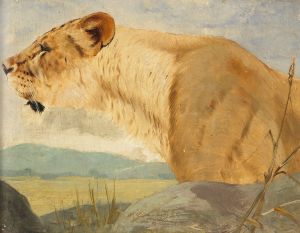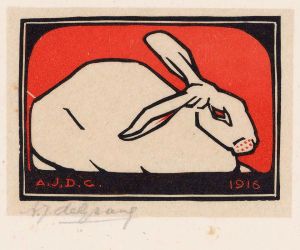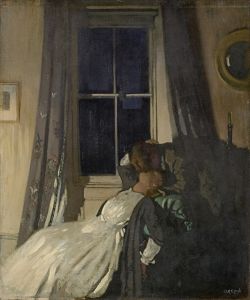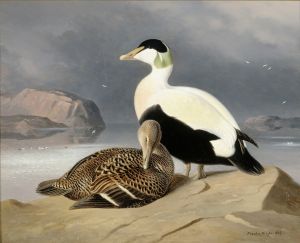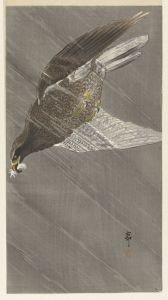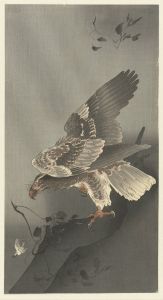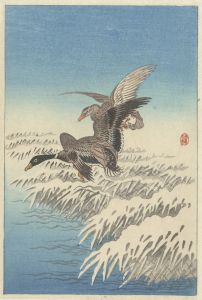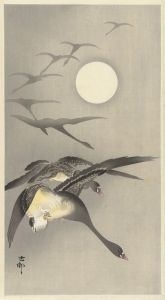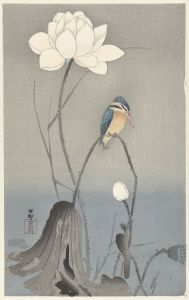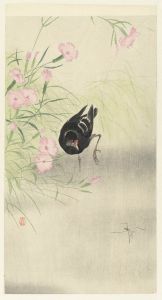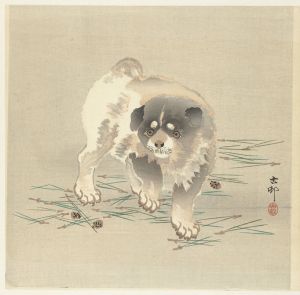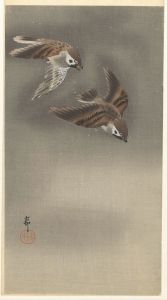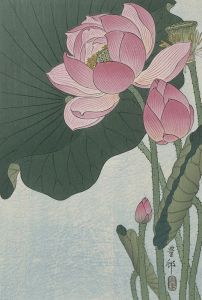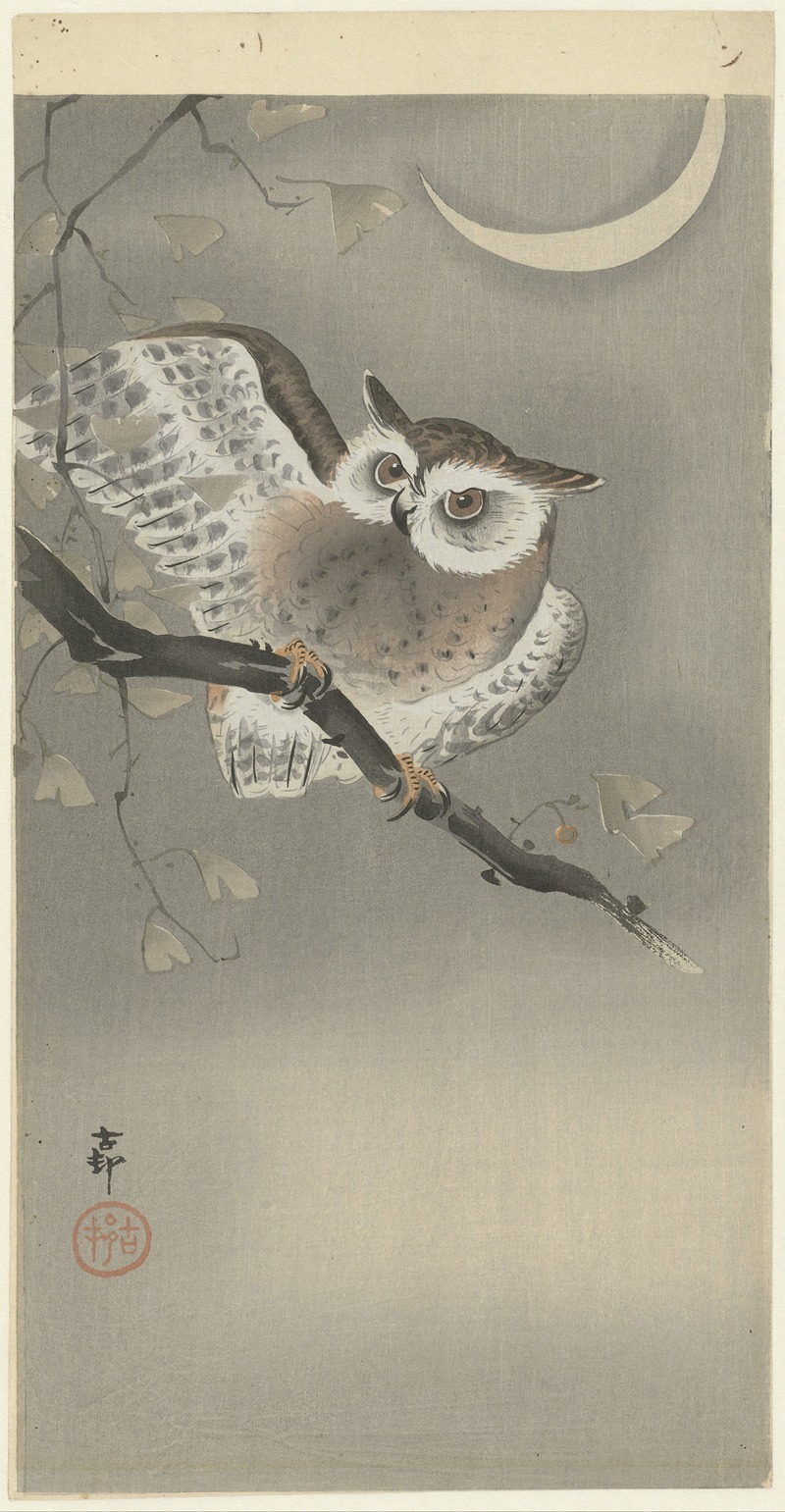
Long-eared owl in ginkgo
A hand-painted replica of Ohara Koson’s masterpiece Long-eared owl in ginkgo, meticulously crafted by professional artists to capture the true essence of the original. Each piece is created with museum-quality canvas and rare mineral pigments, carefully painted by experienced artists with delicate brushstrokes and rich, layered colors to perfectly recreate the texture of the original artwork. Unlike machine-printed reproductions, this hand-painted version brings the painting to life, infused with the artist’s emotions and skill in every stroke. Whether for personal collection or home decoration, it instantly elevates the artistic atmosphere of any space.
Ohara Koson was a prominent Japanese artist known for his work in the shin-hanga movement, which revitalized traditional ukiyo-e art with a focus on modern subjects and techniques. His oeuvre primarily consists of kachō-e, or bird-and-flower prints, which were highly popular in the early 20th century. One of his notable works is "Long-eared Owl in Ginkgo," which exemplifies his skill in depicting nature with elegance and precision.
"Long-eared Owl in Ginkgo" is a woodblock print that captures the serene beauty of a long-eared owl perched amidst the distinctive fan-shaped leaves of a ginkgo tree. The composition is a testament to Koson's ability to blend realism with artistic expression, a hallmark of the shin-hanga movement. The owl, with its characteristic tufts that resemble ears, is rendered with meticulous attention to detail, showcasing Koson's keen observation of wildlife. The ginkgo leaves, with their unique shape and gentle yellow hue, provide a harmonious backdrop that enhances the overall tranquility of the scene.
Koson's work is often celebrated for its subtle use of color and delicate lines, and "Long-eared Owl in Ginkgo" is no exception. The print employs a restrained color palette, which is typical of Koson's style, allowing the viewer to focus on the intricate details of the owl and the leaves. The use of shading and gradation adds depth to the image, creating a sense of three-dimensionality that draws the viewer into the natural world depicted in the print.
The shin-hanga movement, which emerged in the early 20th century, aimed to rejuvenate traditional Japanese woodblock printing by incorporating Western techniques and perspectives. Artists like Koson played a crucial role in this movement, bridging the gap between traditional Japanese aesthetics and contemporary artistic trends. His prints were not only popular in Japan but also gained significant attention in the international art market, particularly in the United States and Europe, where there was a growing fascination with Japanese art and culture.
"Long-eared Owl in Ginkgo" reflects the influence of Western art on Koson's work, particularly in its use of perspective and naturalistic detail. However, it remains deeply rooted in the Japanese artistic tradition, emphasizing harmony with nature and the beauty of the natural world. This blend of influences is a defining characteristic of the shin-hanga movement and is evident in many of Koson's works.
Koson's prints, including "Long-eared Owl in Ginkgo," were produced using traditional woodblock printing techniques, which involved collaboration between the artist, carvers, and printers. This collaborative process was essential to the creation of high-quality prints and was a key aspect of the ukiyo-e and shin-hanga traditions. The resulting prints were not only artistic expressions but also commercial products that were widely distributed and collected.
Today, Ohara Koson's works are highly regarded by collectors and art enthusiasts worldwide. His ability to capture the essence of his subjects with grace and precision continues to resonate with audiences, ensuring his place as a significant figure in the history of Japanese art. "Long-eared Owl in Ginkgo" remains a celebrated example of his artistic legacy, embodying the beauty and tranquility of the natural world through the lens of traditional Japanese woodblock printing.





